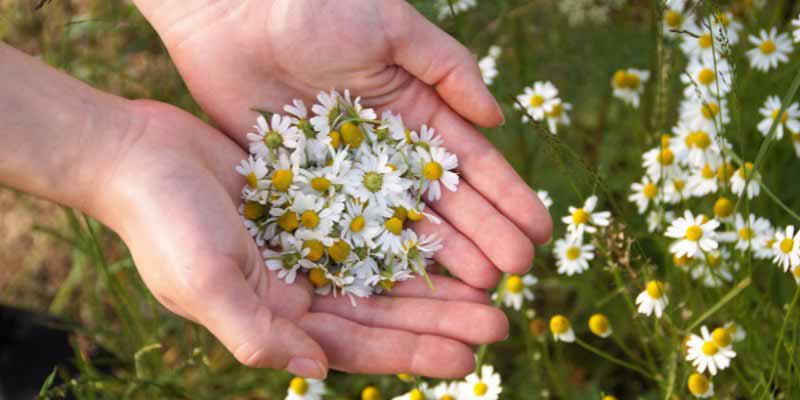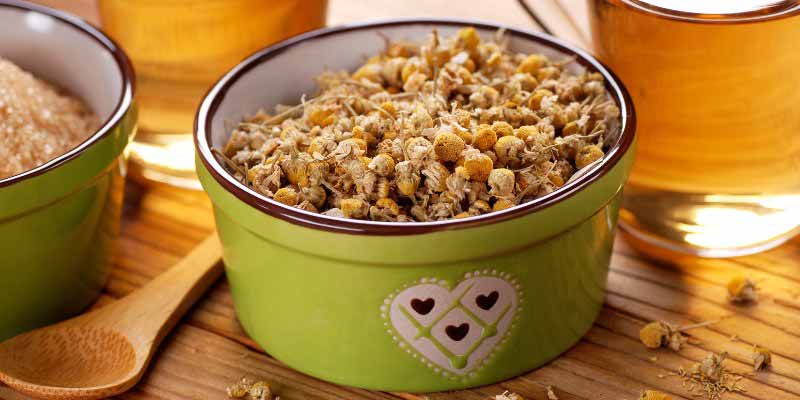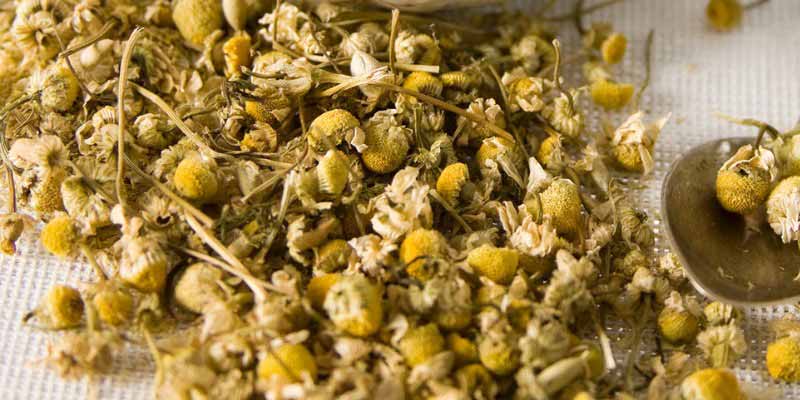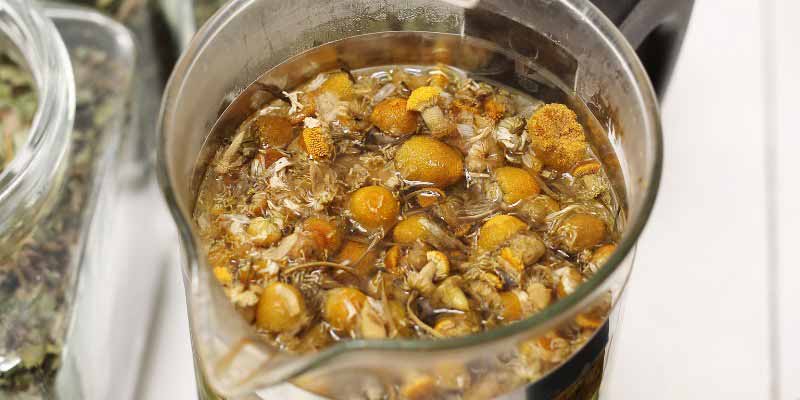Chamomile (Matricaria chamomilla or Chamaemelum nobile) is not just a plant with relaxing properties for our cosy evenings! It is also a true ally in the garden. This herbaceous plant with daisy-like flowers, well-known for its medicinal virtues, also has many benefits for your crops. Whether in the form of an infusion or maceration, chamomile helps strengthen your plants, prevents certain diseases, and promotes a healthier garden. Discover in this tutorial how to make a homemade chamomile infusion or maceration to boost your plants and prevent diseases.
Chamomile, a natural ally for the vegetable garden
Chamomile, sometimes called German chamomile, wild chamomile, small chamomile, true chamomile, or truncated chamomile, is a perennial aromatic, ornamental, and medicinal plant from the Asteraceae family. Its botanical name is actually matricaria, from the genus Matricaria. This aromatic plant has traversed civilizations from ancient Egypt to Rome thanks to its anti-inflammatory, antispasmodic, calming, emollient, febrifuge, and stomachic properties.
We mainly encounter Roman chamomile (Chamaemelum nobile or Anthemis nobilis), also known as “noble chamomile” or “official chamomile,” which is a perennial species; German chamomile (Matricaria recutita or Matricaria chamomilla) or “wild chamomile,” “small chamomile,” or “true chamomile,” which is an annual species with very small heads; and feverfew (Tanacetum parthenium), from which essential oil is extracted.
The plant forms delicate low bushes of 10 to 30 cm, dotted in summer with white daisy-like flowers with yellow centres. Chamomile is an easy plant to grow that will find its place in any garden. Not demanding, it particularly thrives in sandy soils. Planted in the vegetable garden, it attracts hoverflies and lacewings, valuable allies whose larvae feast on aphids. Thus, it helps protect crops naturally and ecologically.

The benefits and properties of chamomile in the garden
A true ally for the gardener, chamomile offers much more than just a summer bloom. In addition to attracting pollinating insects, its antifungal properties make it a natural barrier against certain common plant diseases. It is also a natural stimulant. Its compounds strengthen the growth of young plants and possess a plant anti-stress effect that attenuates the shock of repotting. Chamomile contains active compounds that are very useful in the garden. Its flowers are said to concentrate sulfur, calcium, and potassium, which are beneficial for enhancing plant health and preventing certain fungal diseases such as downy mildew or powdery mildew. Its essential oil is rich in chamazulene and sesquiterpenes, known for their antifungal, insect-repelling, and anti-stress properties for our plants. Flavonoids and other antioxidant principles complement this natural synergy and promote growth, stimulate flowering, and help plants resist external aggressions. In infusion or maceration, chamomile releases these elements to nourish the soil, repel pests, and strengthen crops ecologically. Chamomile acts as a protective shield, promoting the health and vigour of your crops.
Infusion vs maceration: what’s the difference and what are the uses?
The use of chamomile in the garden can be done in two main ways: by infusion or by maceration.
The infusion, made hot, allows for a quick extraction of active principles and is particularly suitable for emergency treatments. Chamomile infusion in spray form promotes disease prevention, naturally stimulates growth, and serves as a shock treatment after repotting.
The maceration, slower and at room temperature, offers a gentler and more gradual extraction, ideal for long-term treatment or activating compost life. The choice between these two methods will depend on the desired objective and the nature of the problem to be addressed.
Both can be used as sprays in the garden, with the infusion also suitable for watering.
In summary:
- Chamomile Infusion
- Principle: extraction of active principles through heat.
- Use: disease prevention, growth stimulation, care for seedlings and young plants.
- Quick action: Ideal for shock treatment after repotting or for preventive spraying.
2. Chamomile maceration
- Principle: slow extraction at room temperature.
- Use: long-term treatment, compost activation, gentle plant protection.
- Gentler and more gradual action: perfect as an insecticide and for strengthening plants in the long term.
When and how to harvest chamomile?
From June to September, when the heads are fully open and emit their characteristic fragrance. Harvest chamomile flowers on a sunny day to benefit from the concentrated essential oils. Gently pick the heads by hand and let them dry in the shade in a well-ventilated area.

Step-by-step recipe: making a chamomile infusion
Necessary materials:
- Dried or fresh chamomile flowers
- A clean, airtight glass jar
- Rainwater or non-calcareous mineral water
- A coffee filter or cheesecloth
- A saucepan
Ingredients:
- 100 g of dried (or fresh) chamomile flowers for 1 litre of rainwater or non-chlorinated water
Preparation:
- Bring water to a simmer
- Place the chamomile flowers in the saucepan
- Let infuse for 10 minutes.
- Strain
- Let cool before use.
- Store in the refrigerator for a few days

Step-by-step recipe: making a chamomile maceration
Necessary materials:
- Organic dried or fresh chamomile flowers
- A clean, airtight glass jar or a container
- 250 ml of rainwater or non-calcareous mineral water
- A coffee filter or cheesecloth
Ingredients:
- 100 g of fresh chamomile flowers or 50 g of organic dried flowers (the amount will depend on the intended use, but generally, a good balance is to have about one-third of the jar filled with flowers.)
- 1 litre of rainwater or non-chlorinated water

Preparation:
- If using fresh flowers, ensure they are thoroughly cleaned. If using dried flowers, make sure they are well-preserved and free from mould.
- Fill the bottom of the container with chamomile flowers.
- Cover the flowers with water. This should be at room temperature. The liquid must completely cover the plants.
- When filling your jar, gently press down on the plants to help them release their active principles.
- Seal the container tightly and let it macerate for at least 24 hours, preferably in a dark place at room temperature. The longer the maceration time, the more concentrated the extract will be.
- After the maceration time, strain the liquid using a coffee filter or cheesecloth to remove plant residues.
- Store in a dark place at room temperature.
- Remember to shake the mixture daily for better extraction of active principles.

Uses in the garden
Chamomile infusion: a natural booster
Chamomile infusion is a natural tonic. It is used as a spray or for watering during sensitive phases such as sowing, transplanting, or the early stages of growth. It is ideal for:
- Seedlings and young plants: soaking seeds in a diluted infusion at 5% promotes seed germination. It helps prevent damping-off. Lightly water or spray young shoots with this herbal tea.
- Boosting greedy varieties such as cabbage and squashes: apply a concentrated infusion at the base of these vegetables at the end of summer.
- Plants sensitive to fungal diseases: such as tomatoes, cucumbers, and courgettes. Chamomile infusion strengthens defences against downy mildew and powdery mildew.
- Repelling certain pests such as Colorado potato beetles and wireworms: spray early in the morning on root vegetables like potatoes, leeks, or asparagus to drive them away.
- Indoor plants: spray on the leaves of philodendrons or ficus to prevent mould.
- Frequency: once a week or after stress (repotting, pruning). Repeat regularly for optimal protection.
Chamomile maceration: insecticide and fungicide
Maceration is used throughout the season for regular and prolonged maintenance. This mixture acts as a gentle fungicide and insecticide. It is suitable for:
- Aromatic plants: basil, parsley, mint… Maceration protects these delicate plants without harming them.
- Soaking seeds for two hours in pure maceration to reduce the risk of damping-off.
- Plants sensitive to insects: spray on roses or geraniums to repel aphids and other whiteflies and thrips.
- Leafy vegetables: lettuce, spinach…
- Compost: adding a bit of maceration to compost stimulates microorganisms and improves decomposition.
- Frequency: 1 to 2 times a month.
? Gardener's tip: Always strain before spraying to avoid clogging the sprayer. And test first on a small part of the plant to check its tolerance!
































Comments